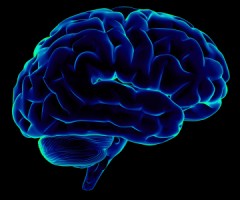Substance Related Disorders:
Substance-related disorders are disorders of intoxication, dependence, abuse, and substance withdrawal caused by various substances, both legal and illegal.
A substance can be anything that is ingested in order to produce a high, alter one’s senses, or otherwise affect functioning. The most common substance thought of in this category is alcohol although other drugs, such as cocaine, , inhalants, hallucinogens (LSD, marijuana, etc), and phencyclidine (PCP)prescription medications that may be abused (such as sedatives or amphetamines), opioids (morphine, heroin),, ecstasy, special-K, and crack, are also included. Probably the most abused substances, caffeine and nicotine, are also included although rarely thought of in this manner by the layman.
According to the mental health clinician’s handbook, Diagnostic and Statistical Manual of Mental Disorders(the DSM), fourth edition text revised (DSMIV-TR), all of the substances listed above, with the exceptions of nicotine and caffeine, have disorders of two types: substance use disorders and substance-induced disorders. Substance use disorders include abuse and dependence. Substance-induced disorders include intoxication, withdrawal, and various mental states (dementia, psychosis, anxiety, mood disorder, etc.) that the substance induces when it is used.
Substance Use Disorders are persisting, maladaptive patterns of drug use. The basic idea behind substance use disorders: the person uses a drug repeatedly, has significant problems because of the drug use, but keeps using the drug anyway. The person may say, “I can’t stop” or “I choose not to stop”. If they say that there really are no problems (when there obviously are), or that the problems arise from some other source (job, spouse, “my depression”, society’s unreasonable rules, etc.), they are said to be using “denial”
- Substance abuse – A maladaptive pattern of substance abuse that results in recurrent and significant adverse consequences, such as failure to fulfill obligations at work, home or school, use in situations in which it is physically hazardous, legal problems, and social and interpersonal problems. The user has not gotten dependent on the substance.
- Substance dependence – A pattern of repeated substance use that results in tolerance (need for increasingly larger quantity of the substance), withdrawal (unpleasant physical reactions) and compulsive drug-taking behavior. The dependent user also experiences withdrawal symptoms when the substance is not used. Withdrawal symptoms vary with the substance, but some symptoms may include increased heart rate, shaking, insomnia, fatigue, and irritability.
Substance-Induced Disorder is a mental or physical problems that result solely from the drug’s chemical effects on the body. They should disappear within a month or so after substance use has stopped.
- Intoxication is the direct effect of the substance after an individual has used or has been exposed to the substance. Different substances affect individuals in various ways, but some of the effects seen in intoxication might include impaired judgment, emotional instability, increase or decrease in appetite, or changed sleep patterns.
- Withdrawal: a reversible drug-specific syndrome of adverse effects resulting from stopping or reducing heavy and prolonged drug use.Various Mental States
Addiction – According to the experts at the National Institute on Drug Abuse (NIDA), addiction is a chronic, relapsing disease characterized by compulsive drug seeking and abuse, and by long-lasting chemical changes in the brain. Two important defining features of addiction are tolerance, the increasing need for more of the substance to obtain the same effect, and withdrawal, the unpleasant symptoms that arise when an addict is prevented from using the chosen substance. Some drugs are more addictive than others; however, depending on an individual user’s propensity for addiction, someone can become addicted to drugs very quickly. Experts say that there are several ways to determine if you have a drug problem. A user should ask questions about drinking or drug use and assess how he/she feels when using. “Am I losing control of my life? Am I giving up things I used to love because of drugs? Have family and friends become less important?
NIDA scientists tell us that “There is no cure for drug addiction, but it is a treatable disease; drug addicts can recover. Drug addiction therapy is a program of behavior change or modification that slowly retrains the brain. Like people with diabetes or heart disease, people in treatment for drug addiction learn behavioral changes and often take medications as part of their treatment regimen.”
Did you know that over 60 percent of the young people currently in treatment are there for dependence on marijuana? When using illegal drugs, or abusing other substances such as inhalants, prescription drugs, or over the counter medications, there is a tremendous potential for addiction, and treatment may be the only option.
Cause:
Any child or adolescent with access to alcohol or drugs can potentially develop a substance-related disorder, but some are at greater risk. Genetic vulnerability plays a strong role, and substance disorders run in families. Studies show that teenagers are more likely to develop substance disorders if they have depression, low self-esteem, or the feeling that they don’t “fit in” socially.
When asked, young people offer a number of reasons for using drugs; most often they cite a desire to change the way they feel, or to “get high.”
Other reasons include:
- Escape school
- Anxiety reduction
- Escape family pressures
- Low self-esteem
- To be accepted by their peers
- To feel adult-like or sophisticated
- Curiosity
- Perception of low risk associated with drugs
- Availability of drugs
Prevention experts have identified “risk factors” and “protective factors” to help determine how drug abuse begins and how it progresses.
Risk factors can increase a person’s chances for drug abuse – Young people are most vulnerable to drug use during times of transition; for instance, when teens make the switch from elementary to middle school or when they enter high school, new social and emotional challenges affect them on many levels.
- Here are some early signs of risk that may predict later drug use:
- Association with drug abusing peers
- A lack of attachment and nurturing by parents or caregivers
- Ineffective parenting
- A caregiver who abuses drugs
- Aggressive behavior
- Lack of self-control
- Poor classroom behavior or social skills
- Academic failure
- Scientists have also studied the adolescent brain, and have determined that the teen brain is not fully formed until young adulthood. Using drugs during the time that the brain is developing increases the potential for drug addiction. According to the 2003 National Survey on Drug Use and Health, adults who had first used substances at a younger age were more likely to be classified with dependence or abuse than adults who initiated use at a later age. This pattern of higher rates of dependence or abuse among persons starting their use of marijuana at younger ages was observed among all demographic subgroups analyzed.
- Protective factors can reduce the risks. It’s important to remember that not everyone at risk for drug abuse actually becomes a drug user.
- Structure
- Consistency
- Limits
Many adults are uninformed—or in denial—about drug use, and their attitudes contribute to or enable young people to engage in drug-using behavior. According to the Partnership for a Drug Free America, many parents need to get better educated about the drug situation.
- Today’s parents see less risk in drugs like marijuana, cocaine and even inhalants, when compared to parents just a few years ago.
- The number of parents who report never talking with their child about drugs has doubled in the past six years, from 6 percent in 1998 to 12 percent in 2004.
- Just 51 percent of today’s parents said they would be upset if their child experimented with marijuana.
- While parents believe it’s important to discuss drugs with their children, fewer than one in three teens (roughly 30 percent) say they’ve learned a lot about the risks of drugs at home.
- Just one in five parents (21 percent) believes their teenager has friends who use marijuana, yet 62 percent of teens report having friends who use the drug.
- Fewer than one in five parents (18 percent) believe their teen has smoked marijuana, yet many more (39 percent) already are experimenting with the drug.






